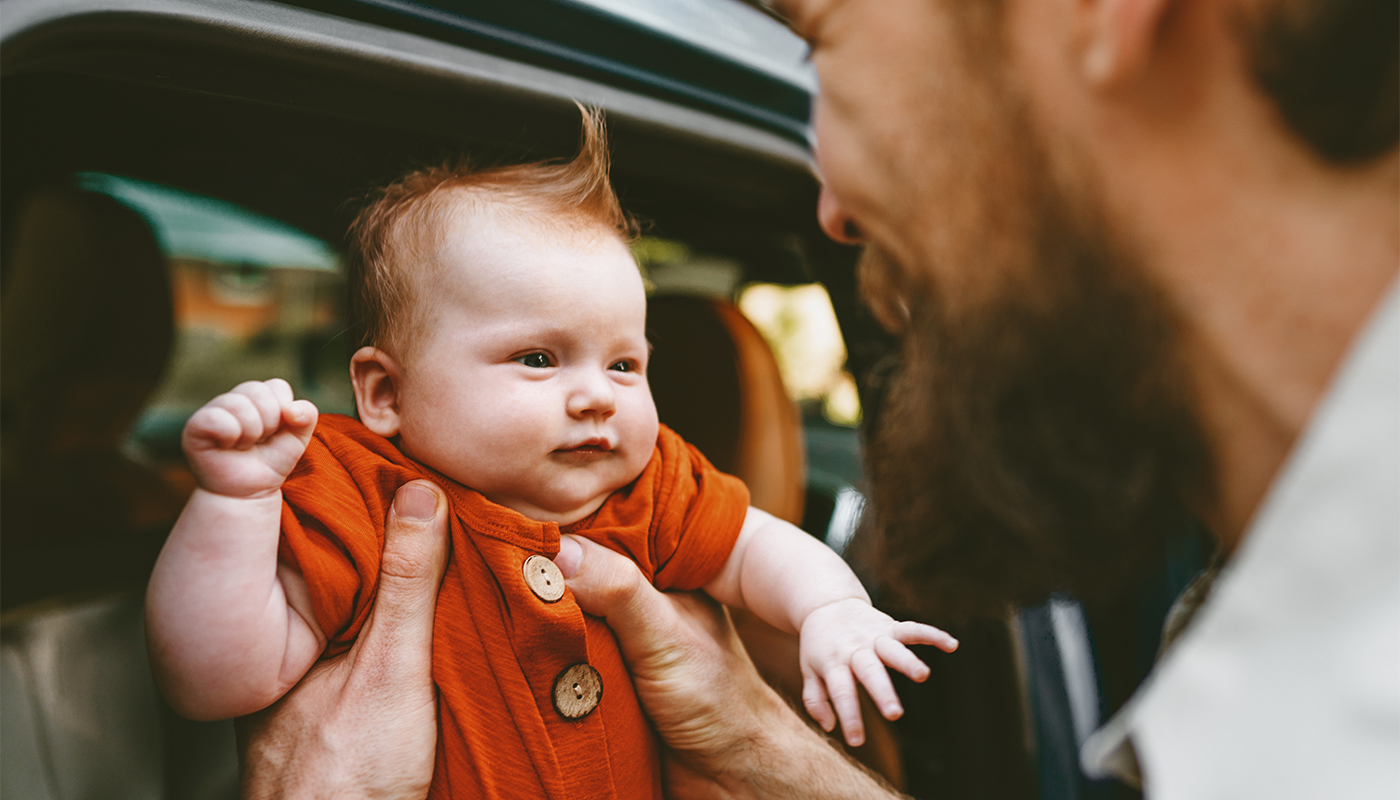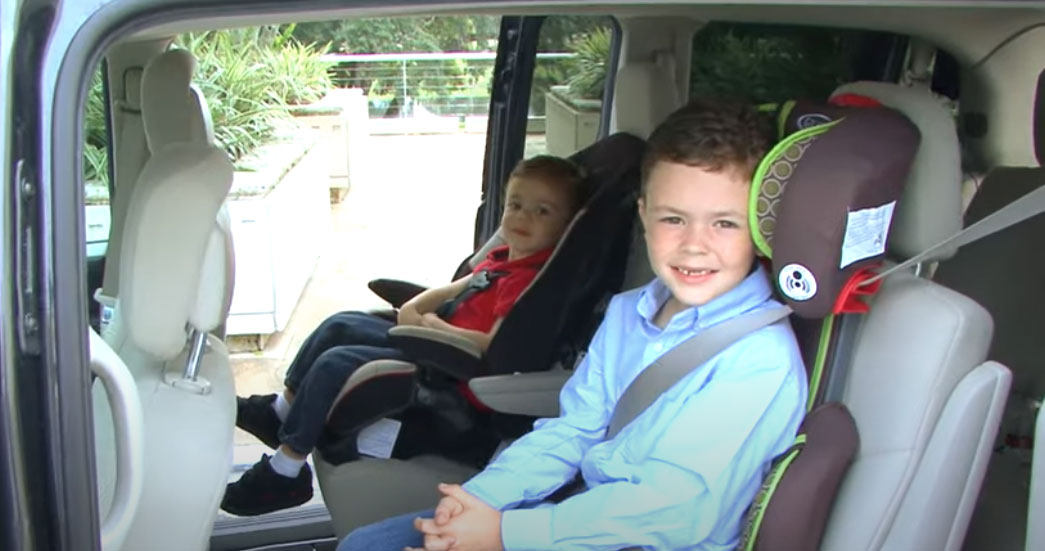Car Seat Guide: How to Keep Kids Safe in the Car
Rear-facing or forward-facing? This Car Seat Guide has all the information you need.
 iStock
iStock
Motor vehicle collisions continue to be a significant cause of fatalities among children. Over the years, AAA clubs nationwide have been instrumental in advocating for enhanced child restraint legislation across all states and the District of Columbia.
So how do you know which car seat to use? What are the differences in car seats? Rear-facing or forward-facing? Booster seat or safety belt?
If you have children, you know there are a lot of questions about how, exactly, to keep them safe in a car. Find the answers in our car seat guide.
Car Seat Guide: Which Seat Should I Use?
If you're not sure when to move your child to the next type of car seat, look at these stages:
Rear-facing safety seat: According to the National Highway & Transportation Safety Administration (NHTSA): “Keep your child rear-facing as long as possible. It’s the best way to keep him or her safe. Your child should remain in a rear-facing car seat until he or she reaches the top height or weight limit allowed by your car seat’s manufacturer.”
Forward-facing safety seat, with harness: Many seats can take children up to 60 pounds or greater. When they physically exceed the seat's height and/or weight limits, move them to a belt-positioning booster seat. Some things to consider when moving to a booster include whether the child is mature enough to sit up correctly, not fall asleep, or not remove the safety belt.
Belt-positioning booster seat: Use this seat until the vehicle's lap and shoulder safety belts fit properly—generally when children are at least 4 feet, 9 inches tall and 8 to 12 years old.
Lap and shoulder belts: According to the NHSTA: “Keep your child in a booster seat until he or she is big enough to fit in a seat belt properly. For a seat belt to fit properly the lap belt must lie snugly across the upper thighs, not the stomach. The shoulder belt should lie snugly across the shoulder and chest and not cross the neck or face. Remember: your child should still ride in the back seat because it’s safer there.”
Front seat versus back seat: All children younger than 13 should be restrained in the vehicle's rear seats for optimal protection.
 Andrew Roberts
Andrew Roberts
This video from AAA provides guidance and insights for rear-facing car seats.
Here are essential tips for installing rear-facing seats in your vehicle:
- Place rear-facing seats in the back seat of your vehicle whenever possible.
- If feasible, use the center seating position as it is the farthest from any impact point.
- According to the NHSTA, “Every car seat needs to be installed using either the lower anchors or a seat belt to secure it in place, never both. Be sure to buckle unused safety belts to reduce the risk of strangulation.”
- When using a safety belt, ensure it is locked and holds the seat tightly. The seat should not move more than one inch in any direction when testing where the belt goes through.
- Position the harness at or below your child's shoulders when riding rear-facing. Refer to the car seat’s instructions to determine the correct harness slot to use.
- Ensure the harnesses are snug and lie flat on your child’s shoulders without any slack that can be pinched.
- Place the chest clip at armpit level, directly across the sternum, to protect soft tissue and help keep the straps secure on your child.
Placing a child in a rear-facing position is crucial for supporting their head, neck and spine, and it minimizes strain on these areas during a collision. It's recommended that children ride in rear-facing safety seats in the back seat of a vehicle from birth until they are at least 2 years old, or until they exceed the weight limit specified by the car seat, typically around 35 pounds. Always ensure that both the age and weight criteria are met before transitioning a child to a forward-facing seat.
AAA Members who rent a car through Hertz get free use of one child, infant or booster seat—a savings of $13.99 per day.
Explore OptionsCar Seat Guide: Understanding Forward-Facing Car Seats
This video from AAA provides guidance and insights for forward-facing car seats.
Once children have outgrown the weight (typically 30 to 35 pounds) or height limit (rear-facing seats height limits require a child’s head be at least 1 inch below the top of the car seat) of their rear-facing convertible seat, around age 2, they can transition to riding forward-facing in the back seat of a vehicle. For optimal safety, it's recommended to keep your child in a forward-facing seat with a harness until they reach the maximum height or weight limits of the seat (typically 40 to 65 pounds).
Forward-facing seats are equipped with an internal harness system designed to securely restrain a child, ensuring snug straps that minimize forward movement. In the event of a crash, the forward-facing position allows for the even distribution of physical forces across a child's body.
Installing Forward-Facing Car Seats
Here are essential tips for installing forward-facing seats in your vehicle:
- Place forward-facing seats in the back seat of your vehicle whenever possible.
- If feasible, use the center seating position as it is the farthest from any impact point.
- Install the seat using either the LATCH system or the vehicle safety belt, but not both simultaneously. Be sure to buckle unused safety belts to reduce the risk of strangulation.
- When using a safety belt, ensure it is locked and holds the seat tightly. The seat should not move more than one inch in any direction when testing where the belt goes through.
- Avoid installing anything under or behind the forward-facing safety seat. Some manufacturers allow for accessories only if they are the manufacturer of said accessory
- Position harnesses at or above your child’s shoulders when riding forward-facing. Refer to the car seat’s instructions to determine the correct harness slot to use.
- Ensure the harnesses are snug and lie flat on your child’s shoulders without any slack that can be pinched.
- Place the chest clip at armpit level, directly across the sternum, to protect soft tissue and help keep the straps secure on your child.
Car Seat Guide: Understanding Booster Seats
When children exceed the weight or height limits of their forward-facing harnesses, typically between 40 and 65 pounds, they can transition to using a booster seat. At this stage, children are still too small for adult safety belts and should continue using belt-positioning booster seats until they reach a height of at least 4 feet, 9 inches and are between 8 and 12 years old. Research indicates that safety belts, designed for 165-pound adult males, can pose injury risks for children due to poor fit.
Installing Booster Seats
Here are guidelines for installing belt-positioning booster seats in your vehicle:
- Always install belt-positioning booster seats in the back seat of your vehicle.
- Use a lap/shoulder belt with the booster seat; never use a lap belt alone.
- Position the booster seat on your vehicle seat.
- Secure the lap/shoulder safety belt around your child and the booster seat. Ensure the safety belt goes through the belt guides to maintain proper positioning on your child.
- The lap belt should be low and snug across your child’s hips and upper thighs, not across the abdomen.
- The shoulder belt should cross the chest and shoulder, resting on the sternum and collarbone.
- Be sure to secure unused booster seats with the seat belt. this will prevent the booster seat from becoming an unrestrained object in a crash
Car Seat Guide: What Are Common Mistakes to Avoid?
- Moving out of a booster seat too soon: Use booster seats until safety belts fit properly. This happens when children can sit with their back against the seat, knees bending at the edge of the seat and feet touching the floor.
- Not installing the car seat tightly enough: The car seat shouldn't move side to side or front to back more than 1 inch at the belt path.
- Not tightening the harness straps enough: Harness straps should lie flat, without any twists. Be sure the harness is snug enough that you can't pinch any extra material at the child's shoulder.
- Not wearing safety belts: The driver and everyone else in the vehicle should always ride safely buckled up. Kids are watching their parents and learning. Also in winter months, it is important to not place your child in a car seat with bulky clothing on. Nothing thicker than a sweatshirt on a child should be under the harness traps of a car seat.
Car Seat Guide: Should I Buy a New or Used Car Seat?
Sure, it's nice to save by buying it used. But when it comes to car seats, used is not usually a good idea. Here are four reasons to buy a car seat new:
- The used car seat may be worn or damaged, and it won't offer maximum protection in a crash.
- Used car seats may have been recalled due to defects. Using a recalled seat puts your child at risk. When you buy your new seat, register it using the model number on the seat's label. You can register online or call the number listed on the label. You'll be notified if your car seat is recalled.
- Car seats can expire. An expired car seat could fail in a crash because the materials deteriorate over time. Find the expiration date at the bottom or back of the seat.
- Used seats may be missing key parts, and there are many—hardware, straps, clips, instruction manuals and more. If some parts are gone, then the the seat is less effective in a crash.
Car Seat Guide: Car Seat Safety Checks
Many locations throughout the country provide in-person and virtual car seat safety checks. One way to quickly find a resource is to do an online search of "car seat safety checks near me." Look for organizations or locations that offer car seat safety technicians who have been trained through the National Child Passenger Safety (CPS) Certification Program.
Here are a few other ways to find nationally certified child passenger safety technicians:
- Attend a safety event sponsored by the Safe Kids Coalition.
- Check with the National Highway Traffic Safety Administration's directory of inspection stations.
- Find a technician through the National CPS Certification Program.
AAA remains actively engaged at national, state and local levels in advancing child passenger safety through educational initiatives and public policy efforts.

